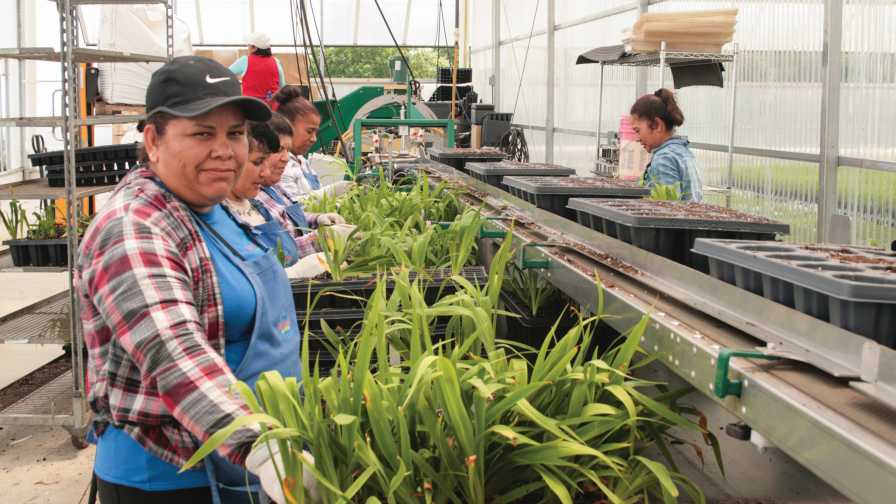Department of Labor Finalizes H-2A Wage Rule; AmericanHort Responds

With a limited labor pool to choose from, finding employees who are self-motivated, work with minimal supervision, and know how to work has become increasingly difficult for employers.
The Department of Labor (DOL) has published its final rule detailing the revised methodology for determining the Adverse Effect Wage Rate (AEWR) for H-2A workers and any U.S. workers in “corresponding employment” (performing any duties-in-common). DOL’s revised methodology establishes new wage obligations for specialized occupational duties such as truck driving/hauling, on-farm construction, and first line supervisors.
According to AmericanHort, the final rule is basically unchanged from what DOL most recently proposed. It retains the current AEWR methodology for most agricultural employment including crop workers (farm, greenhouse, and nursery), livestock workers, agricultural equipment operators, packers, graders, and sorters. Wage data for these occupations are reported in the USDA Farm Labor Survey (FLS), with limited exceptions (Alaska and Puerto Rico). AEWRs for these job classifications will continue to be published annually in December, and take effect around January 1.
For specialized agricultural job classifications not represented in nor reported by the FLS, DOL will use the statewide or national average annual hourly wages for the relevant occupational classification as reported by the Occupational Employment and Wage Statistics (OEWS) program. Examples of duties that will trigger these new (and potentially much higher) AEWRs include truck driving, on-farm construction, and first-line supervisory duties. These OEWS-derived AEWRs will be published annually around July 1.
State workforce agencies will be responsible for reviewing duties listed in H-2A job orders, and assigning standard occupational classification (SOC) codes, and associated wages. Inclusion of specialized duties described will result in assignment of an OEWS-derived AEWR. In the case of multiple SOC codes, the highest applicable wage must be paid to all workers on the job order, regardless of actual duties performed, as well as any U.S. worker considered to be in “corresponding employment” (performing any overlapping duties).
The new rule is scheduled to take effect on March 30, 2023. H-2A applications for temporary labor certification/job orders filed after this date will be subject to the new rule. AmericanHort and collaborators are evaluating options.
AmericanHort, through its membership with the Ag Workforce Coalition, has posted reaction to the new rule:
“The Agriculture Workforce Coalition (AWC) is deeply concerned about the Department of Labor’s publication of the new methodology to calculate the Adverse Effect Wage Rate (AEWR) for the H-2A program. The new calculation dramatically increases costs for producers utilizing the program and will place an undue burden on family farms which are already facing a multitude of challenges, including the impact of high input costs, foreign competition, market volatility, and adverse weather. It will make it difficult for farmers to remain competitive and will serve only to further increase costs for domestically produced agricultural products.
“The AWC urges Congress to act without delay on ag workforce reform legislation. Farmers are committed to paying their employees a fair wage. The way the wage has and continues to be set is flawed and needs to be revised through provisions to reform the H-2A guest worker program, including the wage calculation.
“The Agriculture Workforce Coalition (AWC) unites more than 70 organizations representing the diverse needs of agricultural employers across the country. AWC serves as the unified voice of agriculture in the effort to ensure that America’s farmers, ranchers, and growers have access to a stable and secure workforce.”









